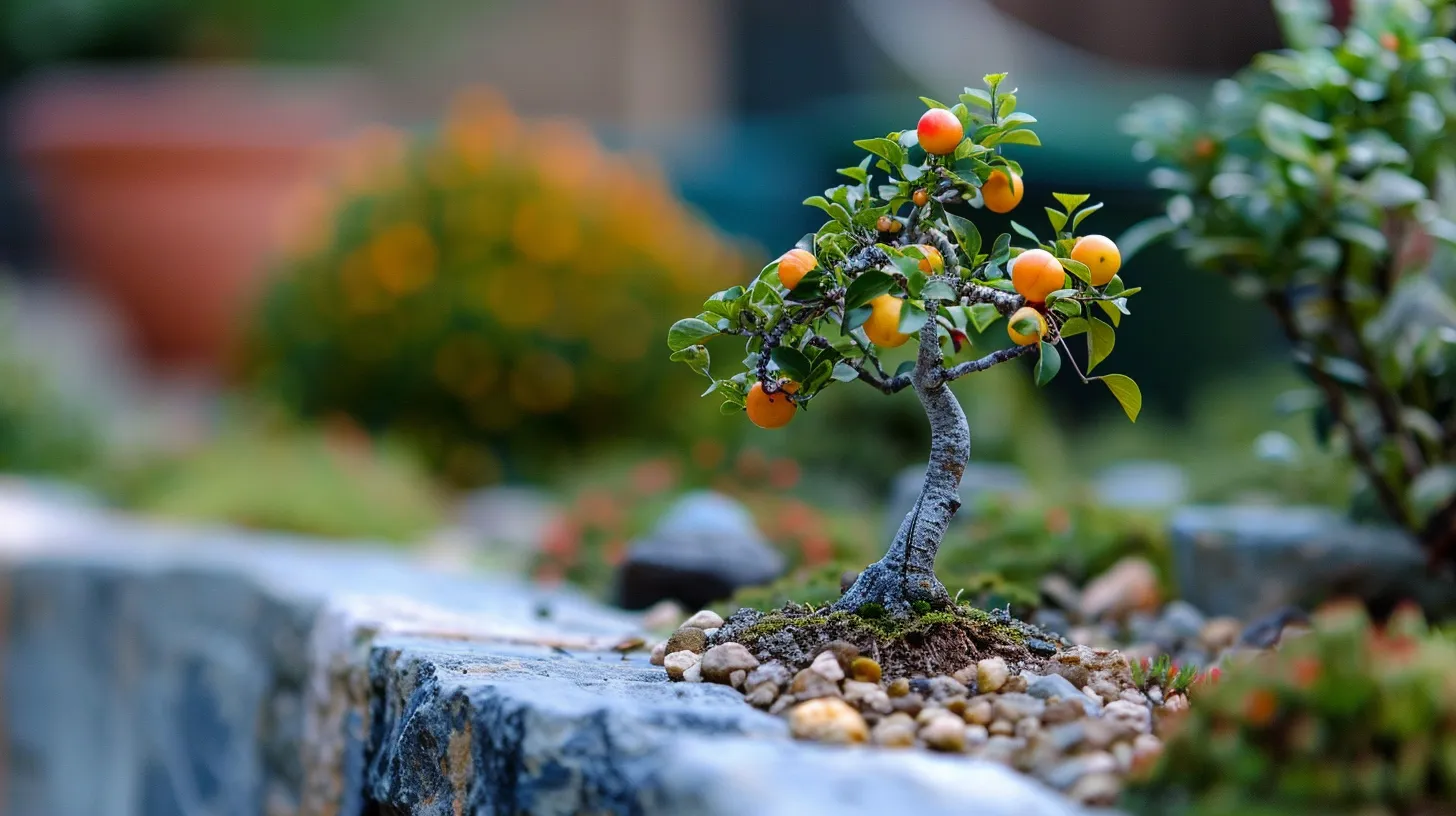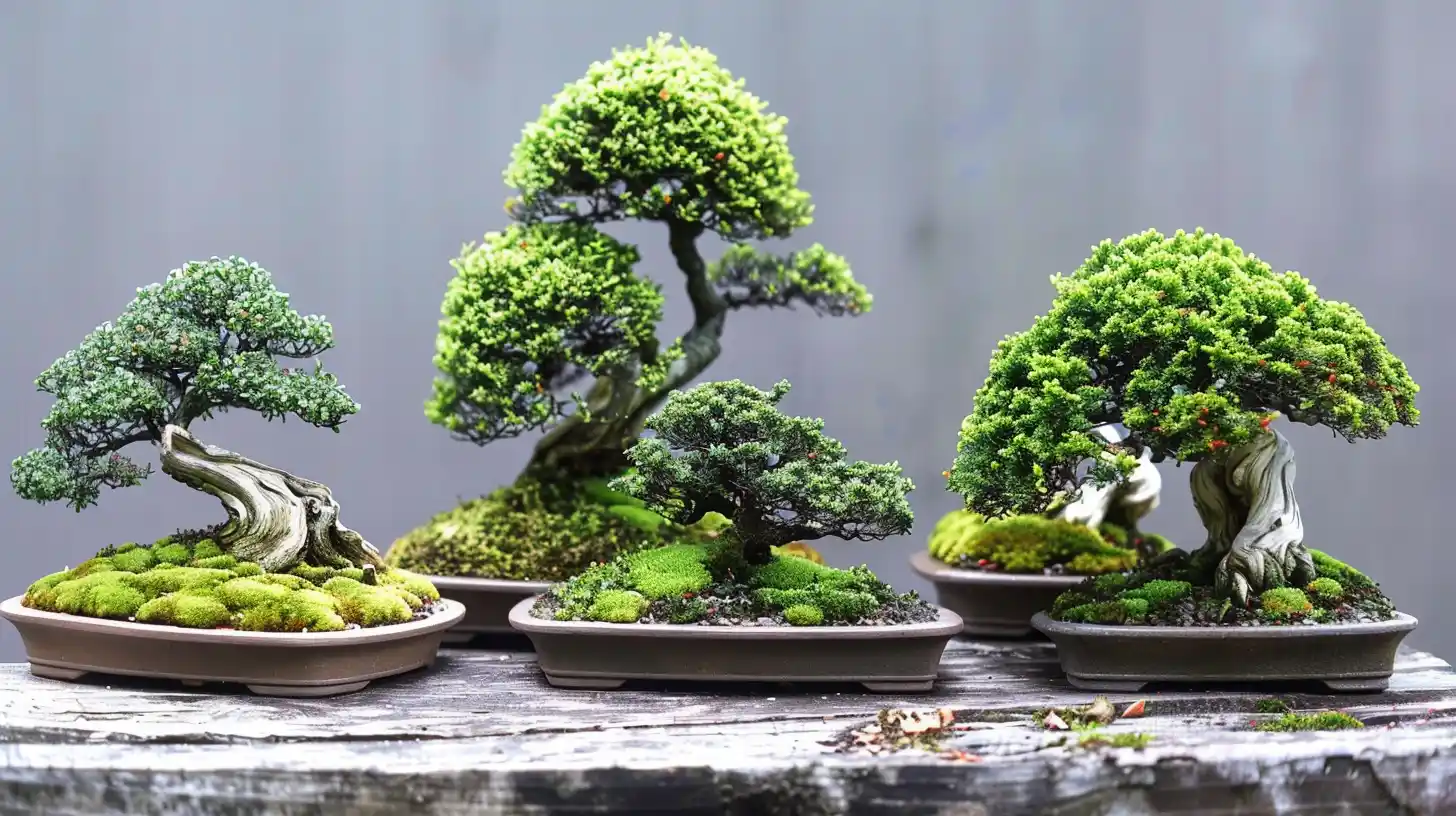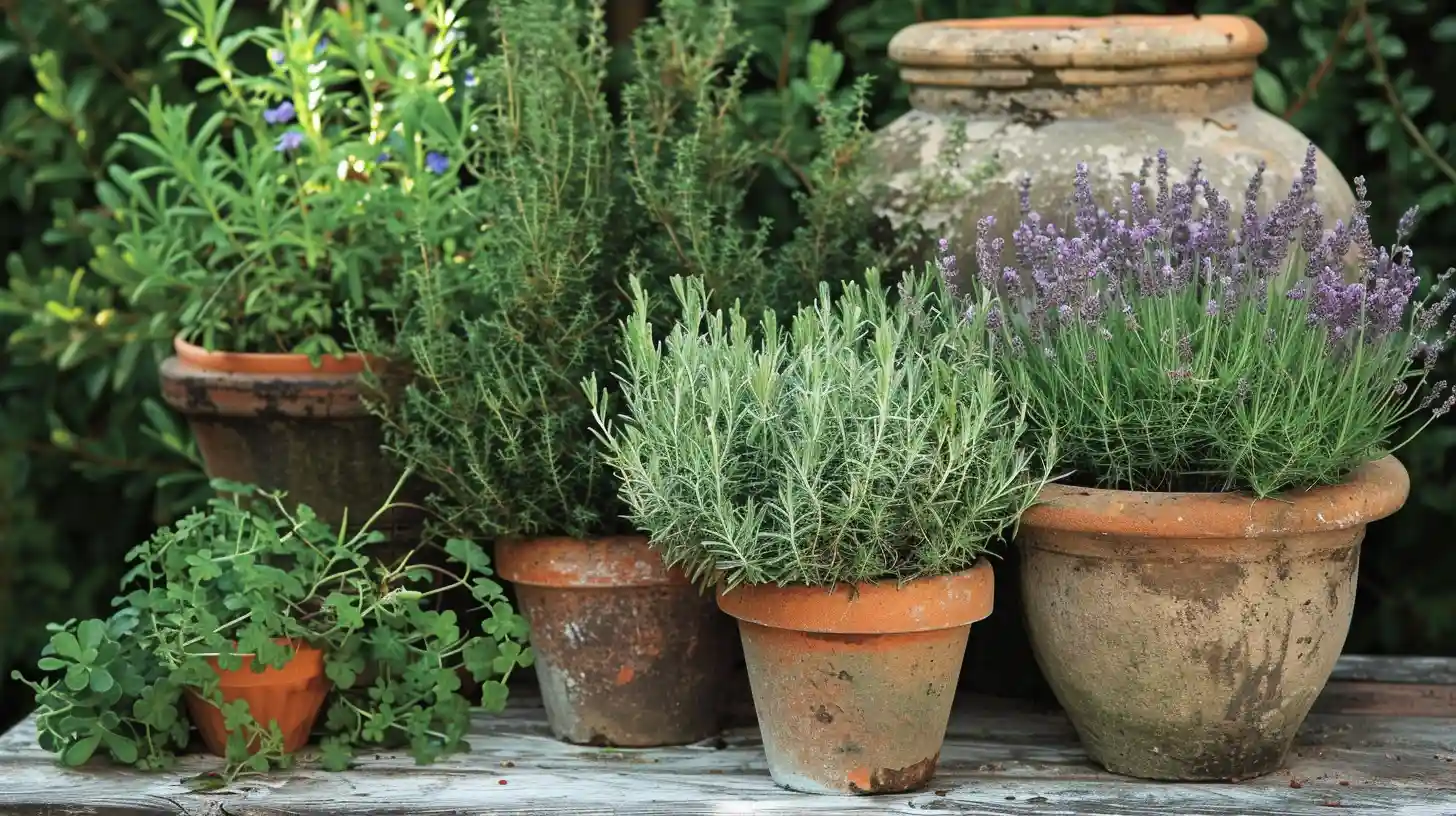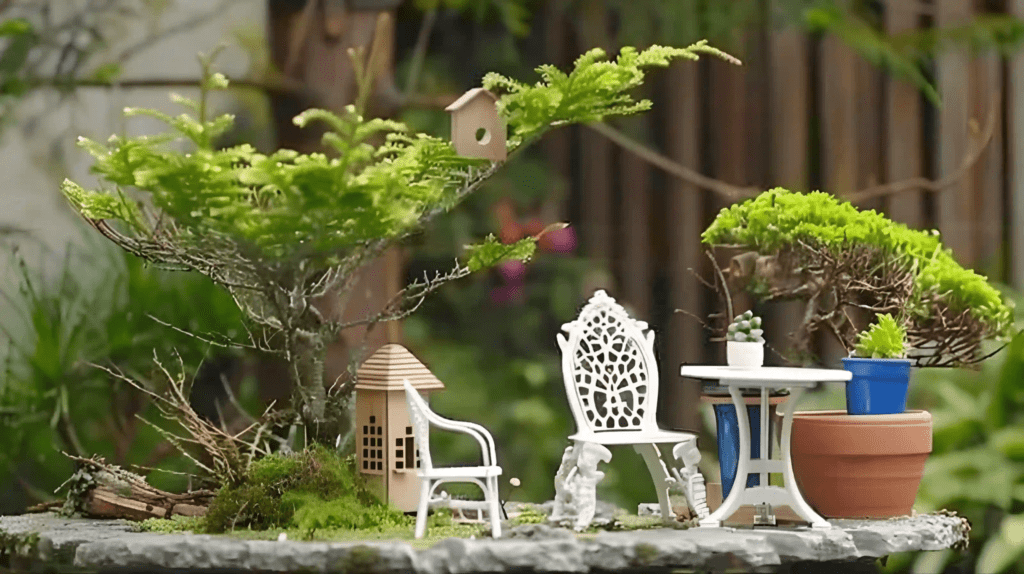
Miniature Trees for Fairy Gardens: Options, Designs and Care Tips
As you imagine your perfect fairy garden, you probably envision a whimsical setting with tiny furniture, sparkling features, and lush greenery. But what about the centerpiece of your miniature world – the trees?
With so many varieties, selecting the right miniature tree can be overwhelming. From dwarf conifers to bonsai trees, each type offers unique characteristics that can make or break your fairy garden’s ambiance. You’re probably wondering what types of miniature trees suit your tiny landscape and how you care for them to ensure they thrive.
Types of Miniature Trees for Fairy Gardens
As you design your fairy garden, you’ll want to consider the perfect miniature tree to bring your vision to life.
You have several options, including dwarf conifers, miniature fruit trees, bonsai trees, and herb trees. Each option offers unique characteristics to enhance your whimsical landscape.
1. Dwarf Conifers
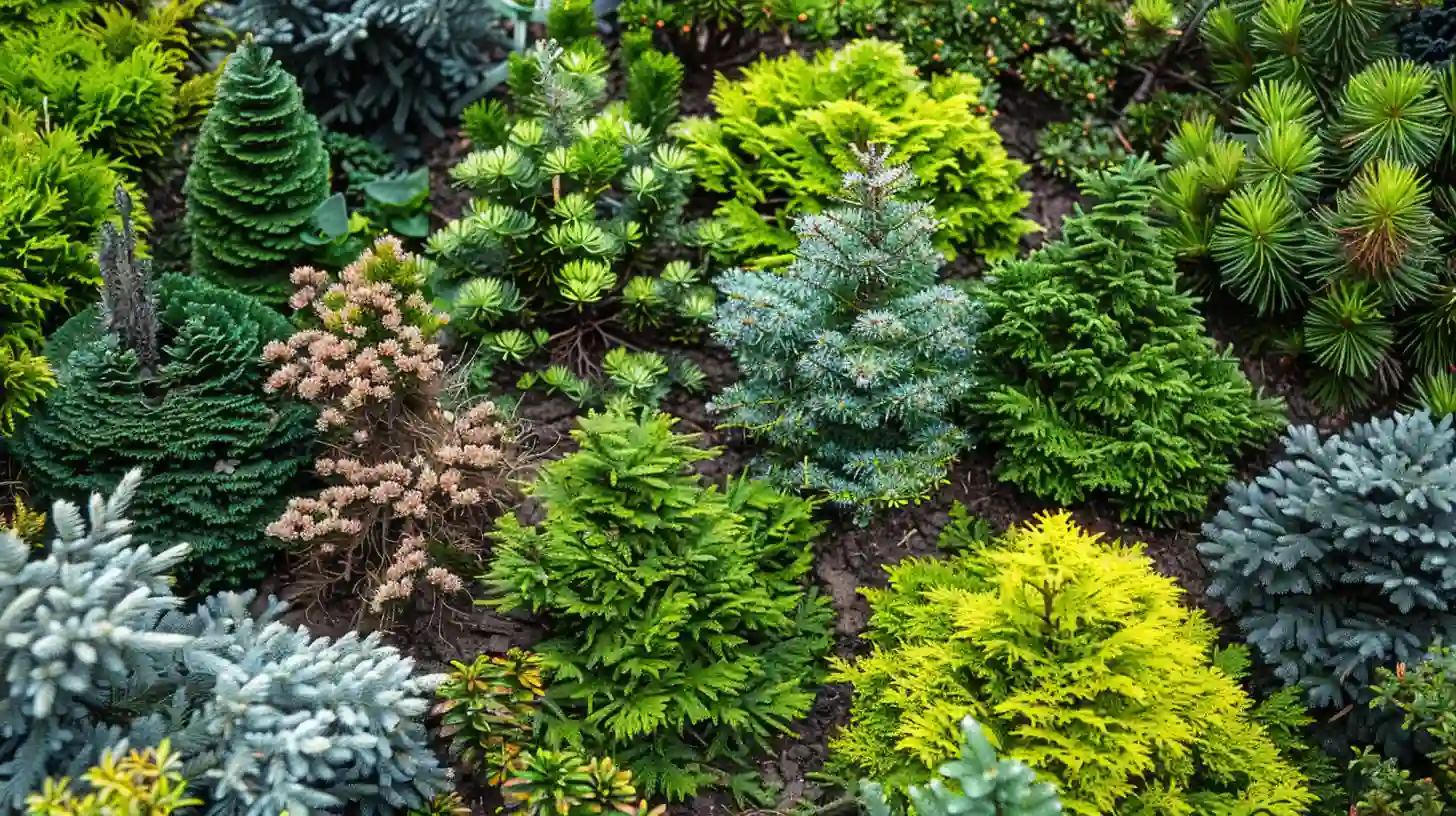
Dwarf conifers are ideal for your fairy garden due to their compact size and slow growth rate. These miniature trees come in a variety of shapes and colors. They can add visual interest to your miniature landscapes.
By incorporating them into your design, you’ll create a magical, enchanting atmosphere reminiscent of a miniature forest.
2. Miniature Fruit Trees
While dwarf conifers bring a touch of magic to your fairy garden, miniature fruit trees can add a burst of color and whimsy. They’re an attractive addition to your miniature landscape.
You can choose from varieties like dwarf apple, cherry, or lemon trees, which can produce tiny fruits, enhancing the enchanting appeal of your fairy garden. Consider miniature peach or pear trees for a magical orchard setting.
These miniature fruit trees need proper care, including regular watering, pruning, and fertilizing.
3. Bonsai Trees
Incorporating bonsai trees can elevate the charm and mystique of your outdoor space. These miniature trees offer a unique blend of elegance and whimsy. Due to their small size and intricate shapes, bonsai trees are ideal for fairy gardens.
You can choose from various types, such as Ficus, Juniper, Pine, and Maple varieties. To keep your bonsai trees thriving, remember to provide regular care, including watering, pruning, and repotting.
4. Herb Trees
For a whimsical touch, incorporate herb trees like miniature rosemary, thyme, and lavender. Their small size and fragrant foliage make them ideal additions to these enchanting outdoor spaces.
With easy care and pruning, you can maintain their petite size, making them perfect for small containers or terrariums. Plus, herb trees offer a variety of textures and colors, enhancing the visual appeal of your fairy garden.
Factors to Consider When Selecting Miniature Trees
When selecting miniature trees for your fairy garden, you’ll want to consider a few key factors.
Climate and Growing Conditions
When selecting miniature trees, consider the specific climate and growing conditions they need.
Check the USDA hardiness zone to ensure the tree can withstand the local climate. Some miniature trees prefer full sun, while others thrive in partial shade.
Choose trees adapted to indoor environments if you plan to display your fairy garden indoors. Assess your miniature trees’ soil quality, drainage, and watering needs to create a harmonious environment.
Size and Scale
Carefully consider the size and scale of your miniature trees to ensure they harmonize with the proportions of your fairy garden.
You don’t want a tree that will outgrow its container or overcrowd the space. Factor in the tree’s growth rate to maintain the desired size in a confined space. Opt for slow-growing varieties to prevent overcrowding over time.
Additionally, choose trees with small leaves or needles to enhance the illusion of a tiny forest in your fairy garden.
Maintenance and Care Requirements
Choosing the right miniature tree for your fairy garden is essential. Understanding its maintenance and care requirements can significantly impact its well-being.
When selecting a miniature tree, consider its pruning needs. Choose slow-growing varieties that need minimal pruning to maintain their small size.
It’s also crucial to ensure you can provide the correct watering conditions. Regularly monitor and adjust your watering schedule to avoid overwatering or underwatering, as both can harm the health of your miniature tree.
Design Ideas for Incorporating Miniature Trees in Fairy Gardens

Now it’s your turn to unleash your creativity and bring your fairy garden to life with miniature trees!
Create a Fairy Forest
With multiple miniature trees of varying heights, shapes, and textures, you can craft a whimsical fairy forest that transports visitors to an enchanted realm.
Varying the heights and textures of the miniature trees will add depth and visual interest to your design. Strategically arrange the trees to create cozy nooks and fairy hideaways, inviting imagination and exploration. Combine the miniature trees with flowering shrubs, mossy accents, and winding pathways to enhance the enchanting atmosphere of your fairy forest.
Use Miniature Trees as Focal Points
As you seek to create a show-stopping centerpiece in your fairy garden, consider showcasing a miniature tree as a stunning focal point. It can draw visitors’ eyes to its unique beauty and charm.
Miniature trees like Jacqueline Hillier Dwarf Elm or Blue Planet Spruce can add height and visual interest to your landscape, creating a sense of scale and depth in your fairy garden design.
Combine with Other Fairy Garden Accessories
You can create a captivating fairy garden scene by combining miniature trees with other whimsical accessories like tiny benches, delicate bridges, or intricately designed miniature pathways. This combination will enhance the enchanting allure of your fairy garden, adding depth and visual interest to the landscape.
For example, a tiny bench nestled under the branches of a miniature tree or a miniature pathway winding through a forest of tiny conifers can transport visitors to a whimsical world.
Care and Maintenance of Miniature Trees
As you tend to your miniature trees, it’s important to focus on providing the proper care, including watering and pruning techniques.
Watering Needs and Schedules
Regular watering is essential to maintain optimal soil moisture levels. Develop a watering schedule that suits your miniature trees’ unique needs, considering factors like tree species, container size, and environmental conditions.
Be cautious not to overwater, as this can lead to root rot, while underwatering can cause stress and damage. A moisture meter can help you gauge soil moisture levels and adjust your watering frequency accordingly.
Pruning Techniques
Pruning is essential for maintaining the shape and size of miniature plants. To shape your trees effectively, try pinching, heading back, and selective pruning. When new growth emerges, prune it back to maintain its miniature size and encourage branching for a fuller appearance.
Fertilization Tips
For healthy growth, use a balanced, slow-release fertilizer specifically formulated for miniature trees in fairy gardens. Apply a water-soluble fertilizer at half the recommended strength every 4-6 weeks during the growing season. Be sure to apply the fertilizer to the soil around the tree’s base, avoiding direct contact with the trunk to prevent burning.
Consider using organic fertilizers to avoid chemical buildup in the soil and support long-term plant health. Monitor your tree’s response to fertilization and adjust the feeding schedule based on growth and entire plant vitality.
Protection from Pests and Diseases
To prevent infestations and diseases, regularly inspect your miniature trees for signs of pests such as aphids, spider mites, or scale insects. Catching problems early allows you to take action before they spread.
Use natural repellents like neem oil or insecticidal soap to control common pests without harming your miniature tree. Maintain good air circulation around the tree to reduce the risk of fungal diseases such as powdery mildew or root rot.
Avoid overwatering, which can lead to root diseases, and ensure proper drainage for your miniature tree. Prune dead or diseased branches to promote overall tree health and reduce the risk of spreading diseases.
Overwintering Tips
As you prepare your miniature trees for the changing seasons, it’s important to take proactive steps to protect them from harsh winter conditions. To ensure your miniature trees thrive in your fairy gardens, consider moving potted trees indoors or to a sheltered area during the winter months.
Mulch the base of the trees with straw or leaves to insulate the roots and retain moisture. Avoid overwatering, as the trees are dormant and need less moisture. Prune any dead or damaged branches before winter to promote healthy growth in the spring.
Conclusion
As you tend to your miniature garden trees, remember to prune, water, and nurture them with love. They’ll thrive and bring magic to your fairy garden with the proper care.
Experiment with different types, shapes, and sizes to create a unique atmosphere. Don’t be afraid to get creative and try new designs.
Watching your miniature garden plants flourish, you’ll be enchanted by the whimsical world you’ve created.
FAQs
How Do I Start a Mini Fairy Garden?
Start by choosing a shallow container and a theme. Then, pick tiny plants and accessories that fit your whimsical vision and arrange them to create a magical, inviting space.
What Plant Looks Like a Mini Tree?
Consider compact conifers like Dwarf Alberta Spruce, Japanese Holly cultivars, or even golden mop false cypress—they’ll add a touch of whimsy to your miniature landscape!
How Do I Make a Cheap Outdoor Fairy Garden?
You can create a cheap outdoor fairy garden by repurposing old containers and using natural elements like rocks and twigs. Shop for miniature plants and accessories at discount stores or thrift shops.

